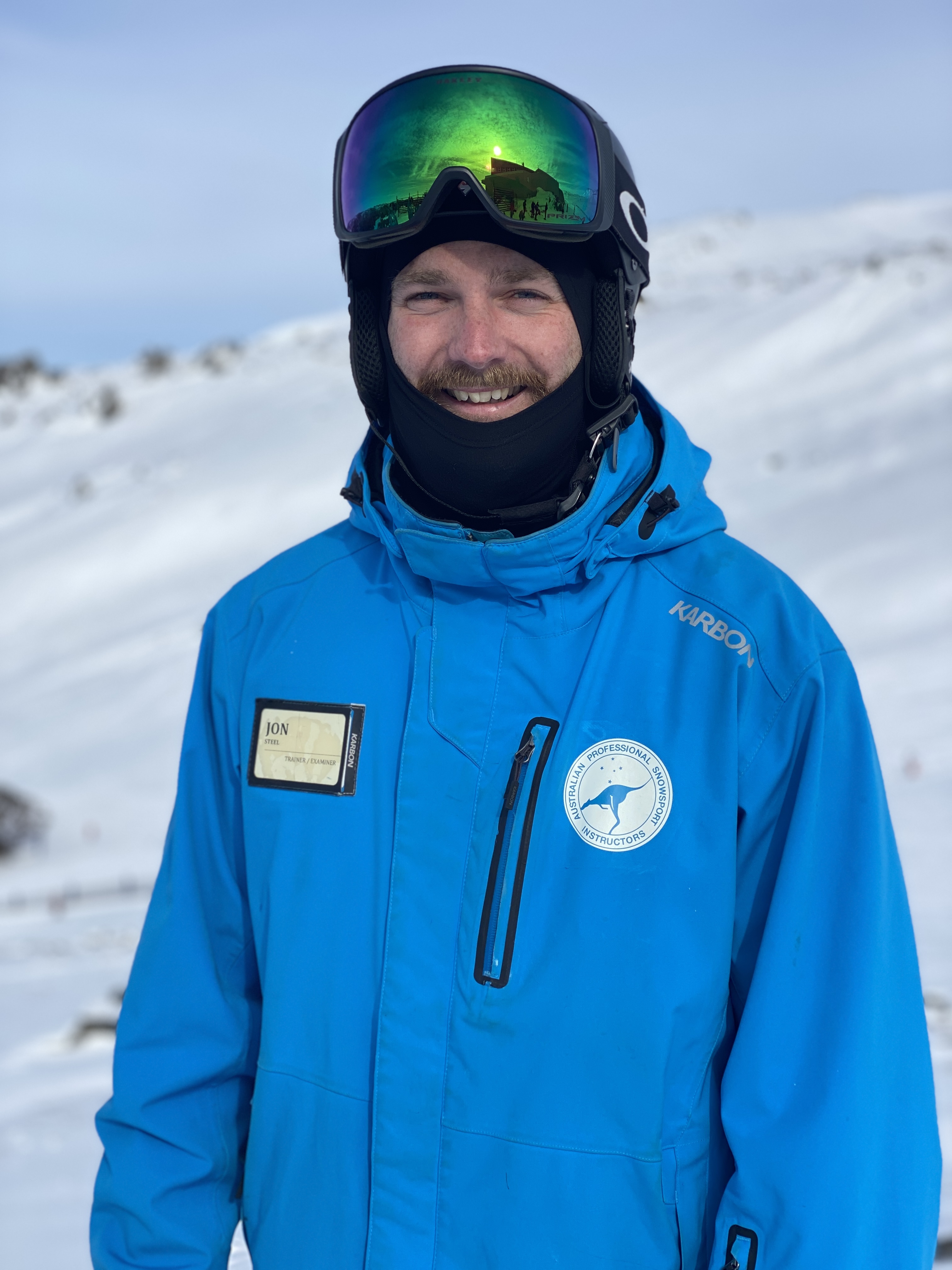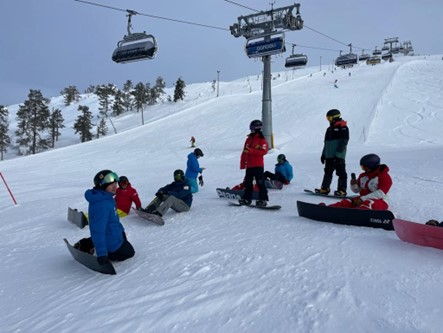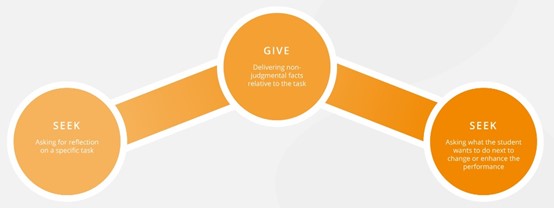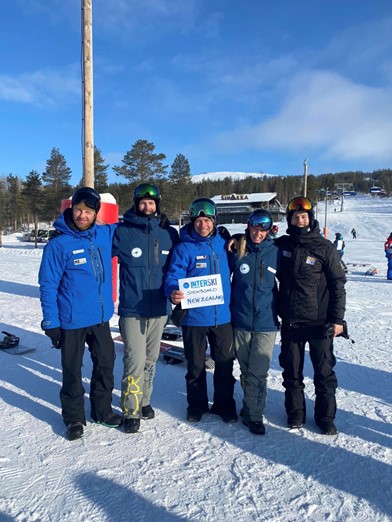 |
NEW ZEALAND The Feedback Toolbox |
By Jon Steel
New Zealand delivered their on-snow clinics on Thursday. I was greeted by Richie & Guy in the morning and they gave a quick overview of the content for the clinic. We were going to explore feedback and how we can implement it throughout the certification pathway.
We split off into two groups, Richie led the group I was in and we headed up the chairlift. Richie asked me about an example of feedback that I’ve received from a trainer in the past. From there he used me as an example and I told the rest of the group the feedback I had received. Richie pointed out the fact that I remember the feedback, what it was, when it happened and how I remembered it. As trainers we probably don’t remember all of the feedback that we deliver, but the recipient of the feedback will remember.

We did an exercise where myself and Gen from Canada did some ollies down a groomed run, the feedback Gen received from Richie was positive and had high energy. The feedback I received from Richie was sharp and wasn’t very positive. This drill pointed out the importance of how, as trainers, we deliver our feedback, sometimes positive can be all it takes for an instructor in training to get what they need out of it. Negative and insistent feedback can put undue pressure on the instructor. Richie talked about a sliding scale of feedback and that we need to read our trainee instructors so we’re not being too forceful on one end, or condescending on the other end.
Richie talked about intrinsic vs extrinsic feedback. With intrinsic being feedback from the body whilst performing something & extrinsic being provided from an external source, for example watching footage of ourselves riding, or feedback from a trainer. We tried some uphill edge hops with our eyes closed to focus in on our intrinsic feedback.
Richie touched on augmented feedback and how it is more collaborative between the guest and the instructor. We as the trainer deliver feedback to help improve a movement after it’s attempted with the hope our guest can start to implement it through muscle memory and repetition.
After this we did an exercise to highlight initial and delayed feedback. Richie used Gen & I as examples. We did the Lv2 carve turn with Richie following me giving me feedback in real time whilst I was riding. The feedback he gave to Gen was when we regrouped after the run. I found that I was able to attempt the feedback during my turns, because I understand the mechanics Richie was highlighting. With Gen we discussed the domino effect (cause & effect) and how we can talk about this more with delayed feedback vs initial feedback.

The final type of feedback presented was seek-give-seek, which aims to create a more engaging learning experience. During the seek phase, questions are asked by the trainer to get the student to reflect on their movements after a task or focus. From the information provided we then provide feedback based on what we observed (Give). After reflection we can then seek what the student would like to do next, be it more practice, adaptation of the task or something new entirely.
Richie did the seek-give-seek example in the versatility task of toe to toe turns (assessed at Lv3) Popping frontside 180 across the fall line off the toeside edge and landing on the new toeside edge, going from forward to switch and back again. After this we paired up amongst the group and practiced the see-give-seek method of feedback on each other.

The clinic was delivered excellently by Richie & we did plenty of laps within the session. I like how the feedback structure follows the SBINZ certification pathway, this makes the content easy to digest and each step builds on the previous.
Thanks again Richie & the SBINZ team!
